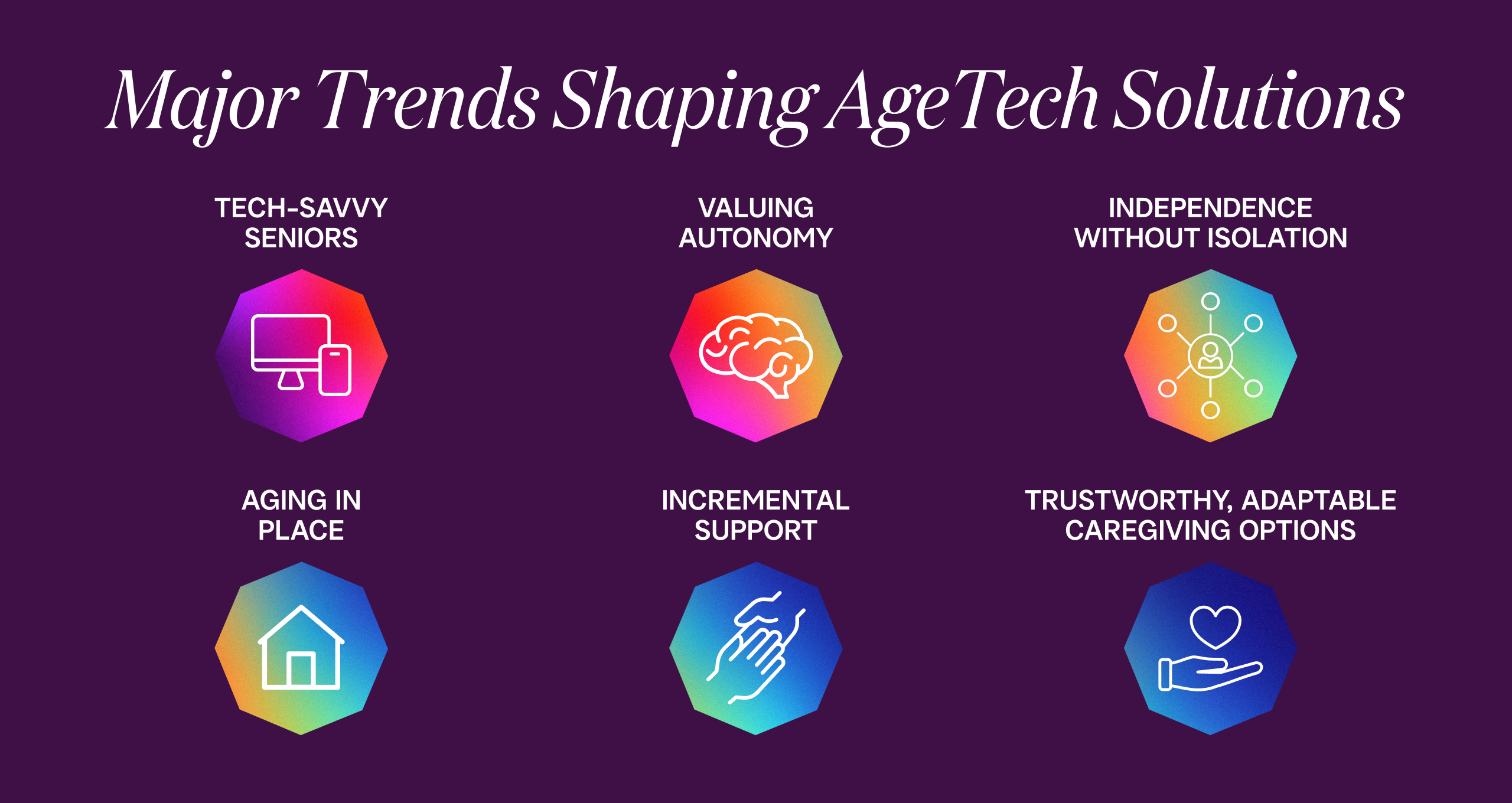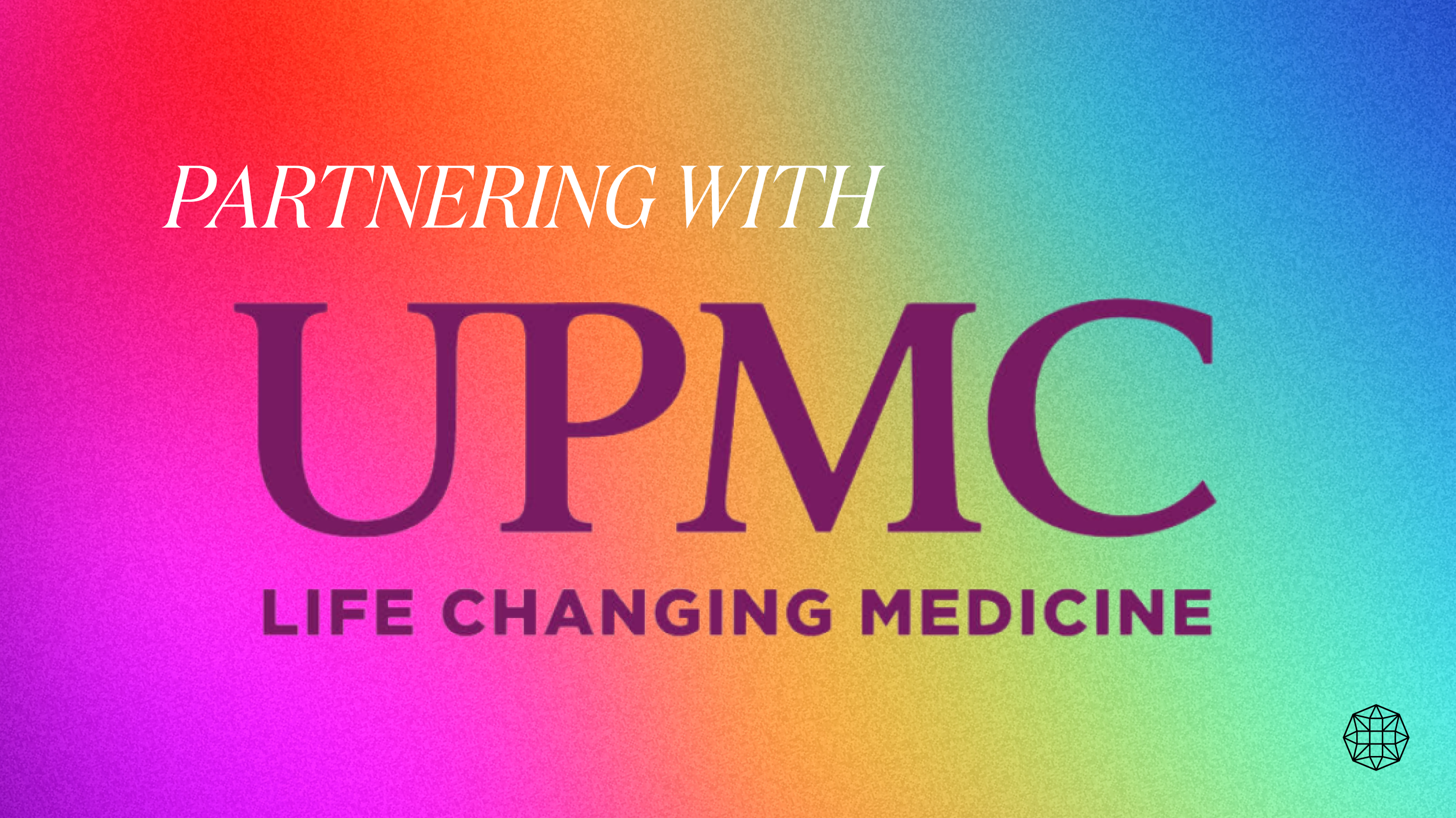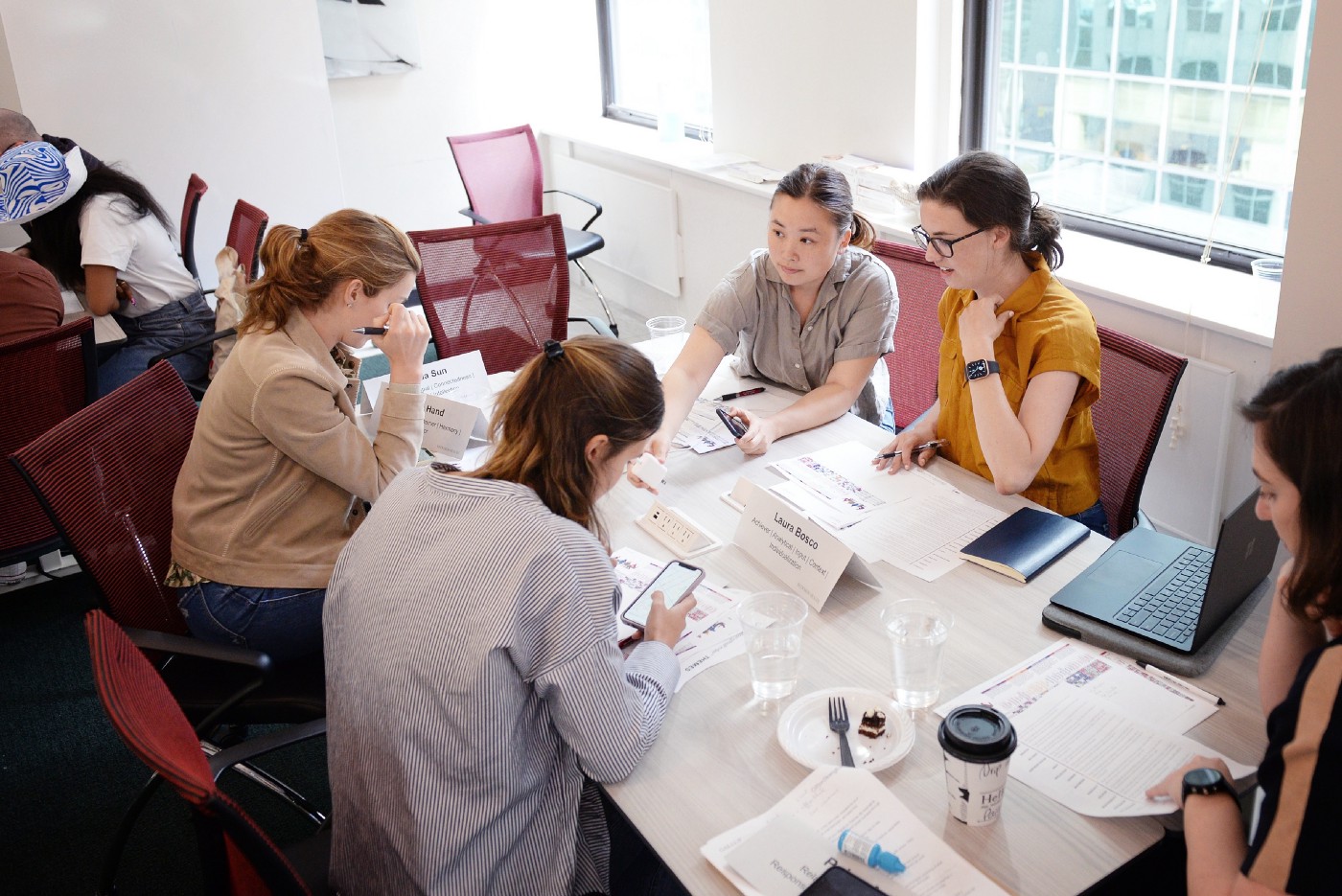
Behind the Curtain: Redesign Health's Company Creation Process
It's easy to say healthcare is broken. It's much harder to fix it. At Redesign Health, we’re up for the challenge.
We partner with leading healthcare institutions and investors to ideate, build and scale new operating companies that drive meaningful impact across the healthcare ecosystem. Our disciplined method of de-risking and launching startups comes together with healthcare incumbents’ deep expertise and scaled distribution. Then, we accelerate each company’s growth through the Redesign Health platform, which compounds learnings and accelerates speed to market. Together, we’ve launched 40+ operating companies since 2018.
Here are the four phases of company creation at Redesign Health.
1) Research and Ideation
Ideation starts by collecting and evaluating ideas from our investors, partners and employees. Our research teams scan the market for emerging trends in healthcare, fintech, and technology–fueled by regulatory and market forces. Here, we identify market gaps and opportunity zones where we can improve cost, quality or patient experience. This top-of-funnel research, supported by a robust network of external advisors, infuses healthcare market and industry expertise into the company creation process. Only the most promising concepts move into the more intensive company-building process.

2. Hypothesis Development
The hypothesis phase includes a “breadth over depth” approach to intensive, hands-on research. Here, we focus on exploration, while conducting ongoing research on the desirability, feasibility, and viability of existing business models. Our team conducts multiple workshops with relevant stakeholders and industry experts to understand their level of dissatisfaction with current market solutions and their willingness to pay for something new. Concepts require attractive economics and positive market signals for the idea to move into the next phase.
3. Initial Diligence
The initial diligence phase informs our understanding of each opportunity space and its risks, validating (or invalidating) our initial hypotheses. We focus on what the problem is, why it’s compelling enough to invest in right now, and how to address it. We also look at the size of the market and realistic opportunities for us to capture market share, and examine what’s currently working and failing in the space. We then pressure-test our idea with stakeholders to understand which solutions and partnerships we need to have to win business and build legitimacy behind our model. Our in-house subject matter experts deliver real-time insights into the estimated time and cost needed to build out capabilities, which ensures our process is grounded in reality.
4. Final Diligence
For a concept to reach final diligence, we need to have a strong understanding of client acquisition funnels and distribution channels within the space. In tandem with ongoing desktop research, we conduct intensive in-field surveys with customers. Our goal is to ensure the ratio of a customer’s lifetime value-to-acquisition cost will be at least 3:1, and that we can make enough money across our customer base to validate the time and cost to build. This final diligence phase is essential to codify both the process workflow of the service (or tool) we’re providing and the quantitative metrics we’ll use to measure success along the way.
We believe that our intensive diligence process sets our companies up for success and front-loads identifying sources of risk. However, we seek to ensure sustainable growth by mapping out “crawl, walk, and run” capabilities and requiring a business to reach certain milestones before it can scale from “v1” to “v2.”
Next Step: Funding
We have a high bar for deploying investors’ capital into our businesses. For a concept to receive the green light for funding, it must score favorably in categories including market dynamics, competition, product-market fit, value proposition, and unit economics — among many other factors.
Throughout the entire process, we keep the following principles top of mind:

By streamlining the complex process of ideating, developing, funding, and launching companies, we’re able to start market-ready companies faster than ever before. Each time we launch a company, we apply the learnings from the dozens of businesses we’ve previously brought to market. The more companies built at Redesign, the more high-quality experiences we can bring to people and patients, and the more likely we are to have a tangible impact on our broken healthcare system.
![No alternate text]() Redesign HealthDemystifying Healthcare Innovation: 4 Lessons on Driving Meaningful Change
Redesign HealthDemystifying Healthcare Innovation: 4 Lessons on Driving Meaningful ChangeInnovation is a frequently used buzzword in healthcare. Despite its widespread usage within our industry, achieving tangible value and impactful outcomes often proves challenging.
April 16, 2024
![No alternate text]() Healthcare TrendsRedesign Health2024 Health Trends: 4 Experts Discuss Key Innovation Priorities
Healthcare TrendsRedesign Health2024 Health Trends: 4 Experts Discuss Key Innovation PrioritiesTo uncover the most pressing healthcare issues—and possible solutions—on the horizon for 2024, our team polled four influential industry thought leaders and Executive Advisory Board members at Redesign Health.
January 10, 2024
![No alternate text]() MedicaidModernizing Medicaid with a Multi-Stakeholder Financing Model
MedicaidModernizing Medicaid with a Multi-Stakeholder Financing ModelDiscover how a multi-stakeholder financing model could overcome some of Medicaid’s obstacles, dramatically improving health and quality of life outcomes for Medicaid recipients while generating savings across government programs.
November 15, 2023
![No alternate text]() Chronic CareRedesign HealthWraparound Care: The Next Frontier in Chronic Care Management
Chronic CareRedesign HealthWraparound Care: The Next Frontier in Chronic Care ManagementExploring tech-infused strategies to manage chronic conditions
September 05, 2023
![No alternate text]() ADVISORSRedesign HealthRedesign Health Advise: Leveraging Experts and Insights to Expand Impact
ADVISORSRedesign HealthRedesign Health Advise: Leveraging Experts and Insights to Expand ImpactThe Redesign Health Advise program connects our team and founders with a deep bench of experts from across the healthcare industry.
June 29, 2023
![No alternate text]() Senior HealthRedesign HealthInvesting in AgeTech: Serving the Growing Senior Health Market
Senior HealthRedesign HealthInvesting in AgeTech: Serving the Growing Senior Health MarketProviding targeted tech solutions for aging adults
June 14, 2023
![No alternate text]() Shifting Sites of Patient Care: Driving Value in Alternative Settings
Shifting Sites of Patient Care: Driving Value in Alternative SettingsRight care, right setting: Unlocking value in alternative sites of care
April 27, 2023
![No alternate text]() Value-Based CareThe Evolution of Value-Based Care: Exploring Challenges and Opportunities in Adoption
Value-Based CareThe Evolution of Value-Based Care: Exploring Challenges and Opportunities in AdoptionRedesign Health Venture Chair Missy Krasner recently hosted a roundtable discussion with leaders in the Value-Based Care Industry to explore how the adoption of value-based care is unfolding--and what to expect in the coming years.
February 15, 2023
![No alternate text]() James QuarlesThe Kids Aren’t Alright: Addressing the Adolescent Mental Health Crisis With Accessible, High Quality, Evidence-Based Practice
James QuarlesThe Kids Aren’t Alright: Addressing the Adolescent Mental Health Crisis With Accessible, High Quality, Evidence-Based PracticeResearch shows that mental health disorders have surpassed physical conditions as the most common causes of impairments and limitations in children. Suicide was the second-leading cause of death among 10 to 14 year-olds in 2020.
February 15, 2023
![No alternate text]() PartnershipsRedesign HealthPartnering with Leading Health Systems to Drive Change and Improve Outcomes
PartnershipsRedesign HealthPartnering with Leading Health Systems to Drive Change and Improve OutcomesAt Redesign Health, we firmly believe the US healthcare system desperately needs innovation to address our lagging health outcomes, sky-high costs and uneven access to care.
February 09, 2023
![No alternate text]() Platform, Company CreationBehind the Curtain: Redesign Health's Company Creation Process
Platform, Company CreationBehind the Curtain: Redesign Health's Company Creation ProcessIt's easy to say healthcare is broken. It's much harder to fix it. At Redesign Health, we’re up for the challenge.
February 01, 2023
![No alternate text]() Healthcare TrendsHealthcare’s Biggest Trends in 2023: Industry Forecast from Redesign Health
Healthcare TrendsHealthcare’s Biggest Trends in 2023: Industry Forecast from Redesign HealthPowering healthcare innovation at scale is the heart of our work at Redesign Health. With 2023 on the horizon, we surveyed our cross-functional team of industry leaders for their forecast for 2023’s biggest trends in healthcare.
December 15, 2022
![No alternate text]() Insights from the Redesign Health Ecosystem: Improving Healthcare for Older Adults
Insights from the Redesign Health Ecosystem: Improving Healthcare for Older AdultsRedesign Health Venture Chair Missy Krasner recently hosted a roundtable discussion with leaders from three of our Operating Companies to explore the state of older adult healthcare in the U.S. and how their teams are facilitating healthier aging.
October 21, 2022
![No alternate text]() ResearchRedesign HealthStuck in the Middle: Healthcare Solutions for Older Adults Shouldn’t Be One Size Fits All. Here's Why.
ResearchRedesign HealthStuck in the Middle: Healthcare Solutions for Older Adults Shouldn’t Be One Size Fits All. Here's Why.There will be more older adults than children in America by 2035. We are not ready. A one-size-fits-all approach to older adult healthcare simply won’t be able to comprehensively support the needs of so many aging people.
October 05, 2022
![No alternate text]() Company CultureRedesigning Company Culture
Company CultureRedesigning Company CultureWe have big ambitions at Redesign Health: to make humanity healthier and to redesign healthcare for everyone. We strive to do things differently here, and building our company culture is no exception.
July 18, 2022














